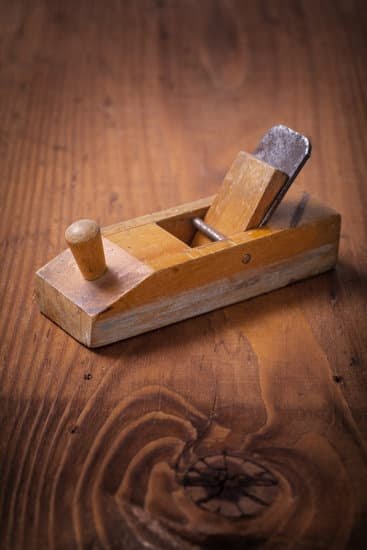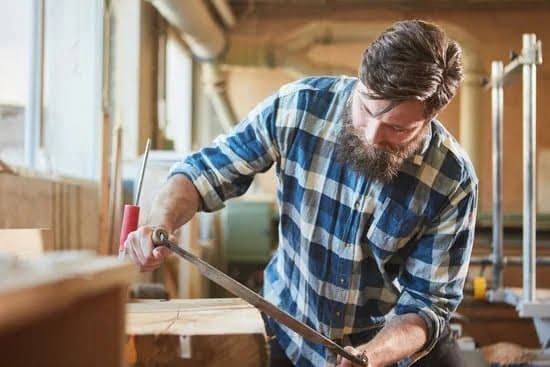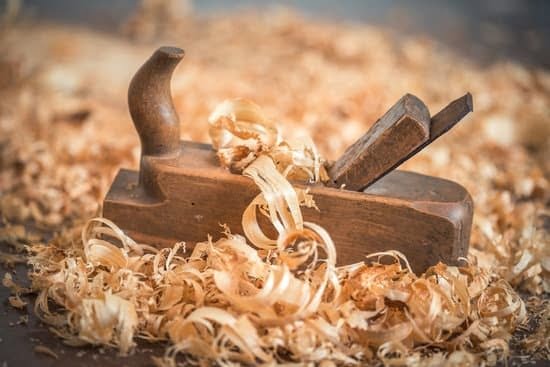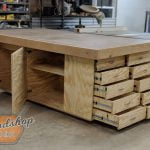Are you looking for a comprehensive guide on how to make drawers woodworking? Whether you are a seasoned woodworker or just starting out, the ability to create high-quality drawers is essential for any project. From understanding the different types of drawers to mastering the installation of hardware, this article will provide you with all the information you need to build and install drawers with precision and skill.
Quality drawers are an essential component of woodworking projects, providing functional storage solutions while enhancing the overall aesthetic appeal of your work. Understanding the importance of well-constructed drawers can take your woodworking skills to the next level, allowing you to create pieces that are not only visually appealing but also highly practical.
In this article, we will explore the various types of drawers commonly used in woodworking projects and discuss the essential tools and materials needed to construct them. From building drawer boxes to installing slides and hardware, we will provide a step-by-step guide along with valuable tips for achieving a perfect fit and smooth operation.
Additionally, we will cover finishing touches such as sanding, staining, and sealing the drawers, as well as troubleshooting common mistakes that may arise during the construction process. With this comprehensive overview, you will have all the knowledge necessary to master the art of making drawers in woodworking.
Understanding the Different Types of Drawers for Woodworking Projects
When it comes to woodworking projects, drawers are an essential component for storage and organization. However, not all drawers are created equal, and understanding the different types of drawers available for woodworking projects is crucial in creating functional and visually appealing pieces.
Traditional Butt Joint Drawers
One of the most common types of drawers used in woodworking is the traditional butt joint drawer. These drawers are constructed using simple butt joints at the corners and are typically seen in classic or rustic furniture designs. While they may be easier to construct for beginners, traditional butt joint drawers may not offer the same level of durability and longevity as other types of drawer construction methods.
Dovetail Drawers
Dovetail drawers are considered a mark of quality and craftsmanship in woodworking. The interlocking dovetail joints provide added strength and stability to the drawer construction, making them a popular choice for high-end furniture pieces. While more challenging to create, dovetail drawers offer a timeless aesthetic and superior durability that make them well worth the effort for experienced woodworkers.
Drawer Boxes With Dado Joints
Drawer boxes with dado joints involve constructing the drawer by creating a groove along the edges where the bottom panel fits into. This type of drawer construction provides a clean and seamless look without any visible joinery on the front of the drawer box. Dado joints offer strength and stability while also allowing for easy installation of drawer slides.
Understanding these different types of drawers for woodworking projects allows you to choose the best option based on your skill level, desired aesthetic, and functional requirements. Each type has its own advantages and considerations, so it’s important to weigh your options carefully before beginning your project on how to make drawers woodworking.
Essential Tools and Materials for Making Drawers
When it comes to making drawers in woodworking, having the right tools and materials is essential for a successful project. Whether you are a beginner or an experienced woodworker, having the proper equipment can make all the difference in the quality of your final product. From measuring and cutting to assembling and finishing, here are some essential tools and materials you will need for making drawers.
Tools
One of the most important tools for making drawers is a good quality table saw. This will allow you to accurately cut your drawer parts to size. You will also need a miter saw for cutting accurate angles, a dado blade set for creating strong joints, and a dovetail jig if you are looking to add intricate dovetail joinery to your drawers.
Materials
In terms of materials, you will need high-quality hardwood or plywood for the construction of your drawers. Consider using hardwood such as oak, maple, or cherry for a strong and durable drawer construction. Additionally, investing in high-quality drawer slides, knobs, and pulls can add both functionality and aesthetic appeal to your finished product.
Other Essential Equipment
Other essential equipment includes clamps for holding pieces together during assembly, various grits of sandpaper for smoothing out rough edges, wood glue for strong joints, and a finish such as stain or varnish to protect and enhance the appearance of your drawers.
By ensuring that you have these essential tools and materials on hand, you can confidently begin your journey into making quality drawers in woodworking. Whether it’s building simple utility drawers or crafting intricate custom drawers, having the right equipment is crucial for success.
Step-by-Step Guide to Building Drawer Boxes
Building drawer boxes is a fundamental skill in woodworking, whether you’re making furniture or cabinetry. The quality of your drawer boxes will determine how well they function and how long they last. Here’s a step-by-step guide to help you build sturdy and durable drawer boxes for your woodworking projects.
Materials and Tools
Before you start building your drawer boxes, gather the necessary materials and tools. You’ll need:
- Plywood or hardwood boards
- Wood glue
- Screws or dowels
- Clamps
- Table saw or circular saw
- Miter saw
- Measuring tape
- Pencil
Measuring and Cutting
Begin by measuring the opening where the drawer will fit. You’ll want to leave a small gap for the drawer slides, so take accurate measurements to ensure a proper fit. Once you have your measurements, use a table saw or circular saw to cut the plywood or hardwood boards into pieces for the front, back, and sides of the drawer box. Be sure to make clean, straight cuts for a professional-looking result.
Assembly and Finishing
Next, assemble the pieces of the drawer box using wood glue and screws or dowels for added strength. Use clamps to hold everything together while the glue dries. Once the box is assembled, sand down any rough edges and apply a finish as desired. You can stain the wood for a natural look or paint it to match your project.
By following these steps, you can create high-quality drawer boxes that will enhance the functionality and aesthetics of your woodworking projects. Remember to measure carefully, use precise cutting techniques, and choose durable materials for the best results. With practice and attention to detail, you’ll soon be able to craft custom drawers that meet your exact specifications.
Techniques for Installing Drawer Slides and Hardware
Installing drawer slides and hardware is a crucial step in the process of making drawers in woodworking. Proper installation ensures that the drawers will slide smoothly and function properly. Here are some techniques for installing drawer slides and hardware:
1. Measure and mark: Before installing drawer slides, accurately measure the cabinet and drawer openings to ensure that the slides will fit properly. Use a pencil to mark where the slides will be positioned.
2. Install the slides: Use a power drill to attach the drawer slides to the cabinet and drawer, following the manufacturer’s instructions carefully. Make sure the slides are level and correctly aligned to avoid any issues with the drawers’ movement.
3. Test for smooth operation: After installing the drawer slides, test each drawer to ensure that they slide in and out smoothly without any obstructions or resistance.
4. Attach hardware: Once the slides are installed, attach any necessary hardware such as knobs or pulls to complete the look of your drawers.
By following these techniques for installing drawer slides and hardware, you can ensure that your woodworking project will result in high-quality, functional drawers.
Remember that proper installation of drawer slides is essential for achieving smooth operation of your drawers in any woodworking project.
Tips for Achieving a Perfect Fit and Smooth Operation
The key to creating high-quality drawers in woodworking is ensuring that they fit perfectly and operate smoothly. Whether you are making drawers for a kitchen cabinet, a dresser, or any other woodworking project, achieving a flawless fit is essential. In this section, we will discuss some tips for achieving a perfect fit and smooth operation when making drawers.
First and foremost, it is crucial to take accurate measurements when making drawers. This includes measuring the opening where the drawer will go as well as the dimensions of the drawer itself. Even the smallest discrepancy in measurements can result in ill-fitting drawers that do not operate smoothly.
When building drawers, it is important to pay close attention to detail during the construction process. Ensuring that all joints are tight and secure, and that the drawer box is square and true, will contribute to a perfect fit. Additionally, using high-quality materials such as hardwood for the drawer sides and plywood for the bottom will help maintain structural integrity and smooth operation over time.
Another tip for achieving a perfect fit and smooth operation is to test the drawer fit frequently throughout the construction process. This allows you to make any necessary adjustments before everything is fully assembled. Paying attention to even the smallest details can make a significant difference in the final outcome of your drawers.
| Tips for Achieving a Perfect Fit | Smooth Operation |
|---|---|
| Take accurate measurements | Test drawer fit frequently |
| Paying attention to detail during construction | Use high-quality materials |
Finishing Touches
Sanding, staining, and sealing are the final crucial steps in the drawer-making process in woodworking. These finishing touches not only enhance the appearance of the drawers but also ensure their durability and longevity.
First, start by sanding the drawer surfaces to ensure a smooth and even finish. Use a fine-grit sandpaper to remove any rough spots or imperfections from the wood. This step is essential for achieving a professional look and ensuring that the stain and sealant adhere properly to the surface.
Once the sanding is complete, it’s time to choose a suitable stain for your drawers. The type of wood you’re working with will determine how the stain behaves, so it’s important to test it on a small, inconspicuous area before applying it to the entire drawer. Apply the stain evenly using a brush or cloth in the direction of the wood grain for best results.
After allowing the stain to dry completely according to the manufacturer’s instructions, finish off by sealing the drawers. A clear polyurethane sealant will protect your drawers from moisture, scratches, and general wear and tear. Apply several thin coats of sealant, allowing each coat to dry before applying the next one.
| Finishing Touches | Sanding, Staining, and Sealing |
|---|---|
| This step is crucial for achieving a professional look | Apply stain evenly in direction of wood grain |
| Use fine-grit sandpaper to ensure smooth finish | Apply clear polyurethane sealant for protection |
Troubleshooting Common Drawer Making Mistakes and How to Fix Them
Even seasoned woodworkers can encounter issues when making drawers. However, understanding the common mistakes and knowing how to fix them can help you avoid frustration and ensure a successful project.
One common mistake when making drawers is not taking accurate measurements. This can lead to drawer boxes that are too big or too small for the opening, resulting in a poor fit. To avoid this, always double-check your measurements before cutting any materials. If you do find that your drawer box is the wrong size, don’t panic. You can either adjust the size of the opening or make a new drawer box to fit properly.
Another mistake is using low-quality materials for drawer construction. Using thin or weak wood can result in drawers that are prone to warping, cracking, or breaking over time. Make sure to use sturdy hardwood such as oak, maple, or birch for your drawer boxes and high-quality plywood for the bottoms. Additionally, investing in good quality drawer slides and hardware will ensure smooth operation and durability.
Lastly, improper assembly of drawer boxes can cause issues with their performance. If your drawers are sticking or not sliding smoothly, it may be due to misalignment during assembly. To fix this issue, carefully disassemble the drawer box and reassemble it, ensuring that all parts are square and aligned properly before securing them together.
By being aware of these common mistakes and knowing how to address them, you’ll be better equipped to create high-quality drawers for your woodworking projects.
Conclusion
In conclusion, mastering the art of making drawers in woodworking requires a combination of knowledge, skill, and patience. Understanding the different types of drawers and essential tools and materials is crucial for a successful project. Following a step-by-step guide to building drawer boxes and learning techniques for installing hardware will ensure that the drawers are well-constructed and functional.
Achieving a perfect fit and smooth operation also requires attention to detail and precision. Taking the time to sand, stain, and seal the drawers will not only enhance their appearance but also prolong their lifespan. Additionally, troubleshooting common mistakes that may arise during the process is an important part of becoming proficient in making drawers for woodworking projects.
Ultimately, by honing your skills through practice and continuously seeking improvement in your craftsmanship, you can truly master the art of making drawers in woodworking. Whether you are a beginner or an experienced woodworker, there is always something new to learn and ways to refine your techniques when it comes to creating quality drawers. With dedication and determination, you can create beautiful, functional drawers that will enhance your woodworking projects for years to come.
Frequently Asked Questions
What Wood Is Best for Making Drawers?
The best wood for making drawers is hardwood, such as oak, maple, or cherry. These woods are sturdy, durable, and can withstand the weight of items stored in the drawer without warping or bending.
How Do You Make a Drawer Step by Step?
To make a drawer step by step, you’ll need to start by measuring the space where the drawer will fit, then cut the wood pieces to size. Next, assemble the pieces using dowels or screws, and finally add a drawer front and install the hardware for smooth opening and closing.
What Is a Cheap Wood to Make Drawers?
A cheap wood option for making drawers is plywood. While not as strong or long-lasting as hardwood, plywood is a more affordable alternative that can still be used to create functional drawers. It’s important to consider the intended use and load-bearing capacity when choosing plywood for drawers.

Hi everyone! I’m a woodworker and blogger, and this is my woodworking blog. In my blog, I share tips and tricks for woodworkers of all skill levels, as well as project ideas that you can try yourself.





